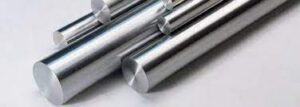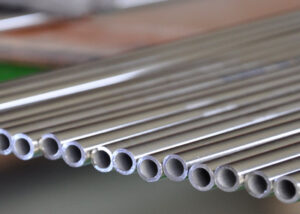Introduction
Stainless steel is a versatile and widely used material in various industries, known for its corrosion resistance, durability, and aesthetic appeal. One particular type of stainless steel that stands out is the 410 stainless steel. In this in-depth article, we will explore the properties, applications, and advantages of 410 stainless steel.
1. Chemical Composition
410 stainless steel is a martensitic stainless steel with a chemical composition primarily composed of:
- Chromium (Cr): 11.5% – 13.5%
- Carbon (C): 0.08% – 0.15%
- Manganese (Mn): 1.0% max
- Silicon (Si): 1.0% max
- Phosphorus (P): 0.04% max
- Sulfur (S): 0.03% max
The combination of these elements contributes to the unique properties of 410 stainless steel.
2. Mechanical Properties
 The mechanical properties of 410 stainless steel include:
The mechanical properties of 410 stainless steel include:
- Tensile Strength: 450 – 600 MPa
- Yield Strength: 205 MPa
- Elongation: 20% (in 50mm)
- Hardness: Rockwell Hardness C (HRC) 20 – 30
These properties make 410 stainless steel suitable for various applications that require strength and durability.
3. Corrosion Resistance
410 stainless steel offers moderate corrosion resistance compared to austenitic stainless steels. It is less resistant to corrosion in chloride-rich environments but can resist mild atmospheres, fresh water, and some chemicals. To enhance its corrosion resistance, proper maintenance and surface finishes are essential.
4. Heat Treatment
410 stainless steel can be heat treated to achieve different properties. Annealing at high temperatures followed by quenching in oil or air can improve its hardness and strength. Tempering after quenching reduces brittleness and increases toughness.
5. Magnetic Properties
One notable characteristic of 410 stainless steel is its magnetic nature, making it suitable for applications where magnetism is desired, such as in certain electronic components.
6. Applications
 410 stainless steel finds application in various industries, including:
410 stainless steel finds application in various industries, including:
- Cutlery: Knife blades and kitchen utensils due to its hardness and corrosion resistance.
- Automotive: Components like exhaust systems and decorative trims.
- Industrial Equipment: Valves, pump shafts, and fasteners.
- Medical Instruments: Surgical instruments and dental tools.
- Aerospace: Aircraft parts and components.
7. Advantages of 410 Stainless Steel
410 stainless steel offers several advantages:
- Hardness: It can be hardened through heat treatment for improved strength.
- Machinability: It exhibits good machinability in the annealed condition.
- Cost-effective: Generally more affordable than other high-alloy stainless steels.
- Magnetism: Magnetic properties enable specialized applications.
8. Frequently Asked Questions (FAQ)
Q1: Is 410 stainless steel suitable for outdoor applications?
A1: While 410 stainless steel offers moderate corrosion resistance, it may not be the best choice for prolonged outdoor exposure, especially in harsh environments.
Q2: Can 410 stainless steel be welded?
A2: Yes, 410 stainless steel can be welded using appropriate techniques. Preheating and post-weld heat treatment are often recommended to reduce the risk of cracking.
Q3: How does 410 stainless steel compare to 304 stainless steel?
A3: 410 stainless steel is a martensitic stainless steel with higher carbon content and lower corrosion resistance compared to the austenitic 304 stainless steel.
Q4: What is the typical heat treatment process for 410 stainless steel?
A4: The typical heat treatment involves annealing, followed by quenching and tempering to achieve the desired hardness and mechanical properties.
Q5: What industries benefit the most from using 410 stainless steel?
A5: Industries such as cutlery, automotive, aerospace, medical, and industrial equipment find significant utility in utilizing 410 stainless steel due to its combination of strength, hardness, and magnetic properties.
Conclusion
410 stainless steel’s unique blend of mechanical, magnetic, and corrosion-resistant properties makes it a valuable material in various industries. Its applications span from cutlery to aerospace components, showcasing its versatility and adaptability. Understanding the properties and advantages of 410 stainless steel empowers engineers and designers to make informed material choices for their projects.
